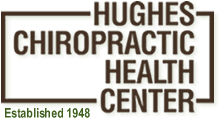
|
253-833-0860 1202 East Main St Auburn, Washington |

|
253-833-0860 1202 East Main St Auburn, Washington |

by Dr. Brad Hughes
Reprinted with permission from Northwest Runner magazine
At one time or another, if you have been running very long, you have been injured. A lot of injuries have apparently obvious causes: twisted ankles, blisters, muscle strains. Then there are those unexpected injuries that plague us just as we seem to really get our training going well for a big race or just fun. Often times it's that same old area of injury or maybe some new spot-either way the level of frustration and disappointment is immense. Why me? Why this? Why now?
The stresses of running require efficient biomechanical functioning. Most of us do not have a structural abnormality or deformity but many of us do have a functional body imbalance that predisposes us to injury.
The most overlooked and misdiagnosed origins of biomechanical induced injury is spinal dysfunction. The spinal column includes the cervical spine (neck), thoracic spine (midback), lumbar spine (lower back), sacrum (base of spine) and coccyx (tail bone).
We need to understand what the major functions are of the spine or spinal column and see how spinal dysfunction would affect each function and could lead to injury:
If there should be any spinal distortion or imbalance it will affect the function of the nerve system (spinal cord) whose job it is to control and coordinate muscle function. That would certainly affect our ability to run efficiently and avoid injuries like spasms in lower back muscles causing back and hip injuries, tight ham strings and calves causing leg injuries, an altered foot plant, leading to foot, ankle and knee injuries, weakened muscles causing an inefficient running gait, putting excess stress on the entire body.
As a runner the proper function of the pelvis is essential. Certainly altering the position and dynamics of the pelvis will adversely affect the running gait and put additional stresses on the hip joints and other joints as the body attempts to compensate, which can lead to hip injuries, iliotibial band strain, knee injuries, ankle injuries and foot injuries. Also, the mid spine supports the rib cage. If the mid spine or thoracic spine is distorted, it will affect the ribs' normal expansion and contraction with breathing, impairing oxygen intake and distorting shoulder level, altering arm swing and affecting smooth running rhythm. The neck or cervical spine, if distorted, will affect the support of the head, leading to improper head carriage and change the weight distribution throughout the body-which could cause exercise-induced headaches, imbalance and altered gait.
This is self explanatory as to importance to healthy running.
Without your body maintaining its proper posture and form, proper natural running form is not possible. The result could be injuries to lower extremities and also stress and injuries on the upper body, neck and shoulders.
As runners, we know about shock absorbing qualities in shoes and softer running surfaces, but did you know the spine provides tremendous shock absorption? That is one reason why a healthy spine when viewed from the side has an "S" shape, to act as a spring. Lose the proper spinal contours and you lose that resilient cushioning effect the spine provides us. So our brain and spinal cord would be excessively jolted when we run as would all our vital organs. Certainly this could lead to damage to the spine, spinal discs, nerves, and internal organs.
If the spine is dysfunctioning, all of the previous functions would be adversely affected. A healthy spine is essential for a healthy nerve system, muscular system, organ function, skeletal system, and healthy, injury-free running.
Unfortunately, most spinal injuries are subtle and leave us unaware that they exist and certainly unaware of their predisposing us to a myriad of other seemingly unrelated running injuries. So what happens to our spine and what can be done to correct this major cause of running injuries and poor health?
What happens is that from trauma, wear and tear, or stress, over time our spinal vertebrae can get misaligned. These misalignments known as vertebral subluxations interfere with the proper function of the nervous system, the vertebrae and spinal column and ultimately with the entire body. It creates disharmony and incoordination and leads to injury, lowered resistance to disease and ill health.
Only Doctors of Chiropractic specialize in the care of the spine focusing on locating, analyzing and correcting vertebral subluxations.
So next time you are waylaid by injury or, to prevent being injured in the first place, consult a Doctor of Chiropractic. Get your spine analyzed and corrected of any existing vertebral subluxations. You may not have any back pains to indicate the spine is involved in your health problems. Vertebral subluxations have been referred to as "Silent Killers" because they can slowly eat away at a person's health, vitality, and physical performance.
An ounce of prevention may be worth a pound of cure. Or in this case, a spinal correction may be worth miles of healthy and injury-free running.